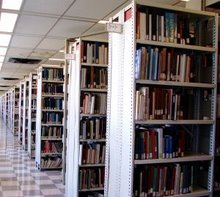Today's colleges and universities are changing with the times.
Programs change as do the ways that students are taught. However
there is one growing program on almost every public college
campus that administrators are not proud to point out to
distinguished visitors -- developmental education. This article
will address the good, the bad, and the ugly truth about
developmental education classes.
There are many ways that developmental education classes are
good for both students and the institutions they serve.
Developmental education classes help students who are not
prepared for college-level work in reading, writing and math
develop the necessary skills to succeed in college. Some of
these students are nontraditional students returning to school
after a long lapse and need help brushing up on skills. Other
students are traditional students who did not acquire the
necessary skills before graduating from high school.
Developmental education classes serve an important function in
that they help bridge the gap for those who want to attend
college and do not have the necessary skills. Some institutions
practice an open-door policy and provide developmental education
classes to bring their student body up to standard. Other
institutions provide a conditional admittance for students
dependent on their attending and passing developmental classes.
However, there is also a bad side to developmental education
classes. Each year, the number of students enrolling in
developmental level courses in postsecondary education
increases. In fact, almost 42 percent of all freshmen enrolled
in public 2-year colleges were enrolled in at least one
developmental course, according to National Center for Education
Statistics. The percentage drops if you factor in four-year
programs but not as much as you would think as many public
four-year programs also have significant developmental education
programs out of necessity. Many students do not take one single
developmental class. They often end up taking classes in all
three developmental areas -- reading, writing and math. In
addition, some of these students end up taking more than one
semester worth of developmental work in these areas. Sometimes
because their need for remediation requires a multi-course
sequence, but also because they do not pass the remedial courses
the first time they attempt them. This places a significant
financial burden on many students and their families as these
courses lengthen the time required to earn a degree -- often
adding at least a year onto the time necessary to earn a
four-year degree. Most developmental education classes do not
offer credit toward graduation and students cannot begin taking
the credit-bearing course in that area until successfully
completing the developmental class.
Believe it or not, there is an even uglier side to
developmental education to the add to the burden of time and
money. It can also be stressful on the student who may feel
discouraged and unfairly labeled. Plus, while developmental
course work can be a great help to many first year students,
research has shown that the number of developmental courses and
the kinds of developmental courses that students take makes a
difference in their future success. The success of underprepared
readers in college is directly and significantly related to
taking and passing a reading skills course and deficiencies in
reading skills are indicators of comprehensive literacy problems
and they significantly lower the odds of a student's completing
any degree.
If you or someone you care about is headed for college you need
to learn more about the good, the bad, and the ugly truth about
developmental education classes.
About The Author: Renaissance Woman Deanna Mascle shares more
education articles at http://dawggone.
Do I look like a student?

Wednesday, February 20, 2008
College Degree - The Good, The Bad And The Ugly Truth About Developmental Education Classes
Subscribe to:
Comments (Atom)

